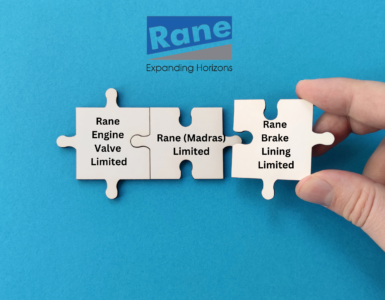Even as the bond holders of Castex Technologies, formerly Amtek India, alleged manipulation, the company on Thursday converted around $80 million (Rs.530 crore) of bonds into equity. The Amtek group company allotted 39.4 million fresh equity shares (around 11.5 per cent stake on a diluted basis) to the holders of its foreign currency convertible bonds (FCCB), at a conversion price of Rs.103 a share. The shares of Castex on Thursday closed at Rs.40.35, down 60 percent from the conversion price. In other words, bonds worth about Rs.530 crore had been converted into equity shares worth less than Rs.160 crore as on Thursday.
These FCCB bonds had a clause of “mandatory conversion”, which was triggered after the share price of Castex remained above the threshold price of Rs.160 for a month.The company board on July 31 decided to mandatorily convert all outstanding FCCBs, worth $130 million (about Rs.850 crore), into shares.
Bond holders alleged the stock price of the company was manipulated to meet the mandatory conversion condition. The stock price of the company has hit five per cent below the trading limit on all occasions since July 13. FCCB investors, including six hedge funds, have written to the market regulator, Securities and Exchange Board of India (Sebi), to look into the movement in Castex Technologies stock price and void the conversion of bonds into equity. The bond holders have appointed legal firm Quinn Emanuel Urquhart & Sullivan and moved a court in the UK seeking compensation.
“If there is a wrongdoing or some form of corruption, whether this is a pump or dump scheme, the mandatory conversion should be withdrawn and invalidated. Right now, we want Sebi to see if the price movements were fair,” Bloomberg quotes Richard East, a partner at Quinn, as saying.
According to sources, following complaints by bond holders, the capital market regulator has initiated a probe into trading in Castexshares. An email sent to Sebi on this issue did not elicit any response.
According to legal experts, if Sebi is able to establish that the share price of Castex was indeed manipulated, the trustee of the FCCB issue can consider the conversion void and declare it an event of default. Citibank is said to be a trustee to the FCCB issue. An email seeking comments from Citibank did not elicit any response.
“The Companies Act provides a remedy in case of a failure to pay an admitted debt like FCCB. The creditor might consider filing a winding-up petition against the debtor company so that its assets could be liquidated and the creditor repaid,” said Yogesh Chande, partner, Shardul Amarchand Mangaldas, Advocates & Solicitors.
Chande added Sebi investigations in such matters usually took time as the matter needed thorough investigation before arriving at a conclusion.
“As Sebi investigation takes time, bond holders can consider filing a writ petition before a court asking for reversing the allotment,” said a lawyer who did not wish to be named.
(Source: Business Standard)
Newar’s move High Court against Lafarge Birla Corp deal:
The decade-long ownership dispute between the Birla family and the Lodhas has again flared up. Only this time, it involves one of the largest cement deals of recent times.
A legal salvo to thwart the Birla Corp and Lafarge deal have been fired. The Birla faction led by MP Birla’s sister Laxmi Devi Newar’s scions have filed a petition in Calcutta High Court seeking an injunction in Birla Corporation’s plan to buy Lafarge India’s cement units at Jojobera in Jharkhand and Sonadih in Chhattisgarh.
The case is expected to come up for hearing on September 9, barring an outside chance of not coming up at all. ET has reviewed the petition filed at Calcutta High Court. In their petition, Arvind Newar along with his brother Ajay and others, have prayed for injunction restraining Birla Corp from acquiring Lafarge units and to maintain status quo until the court assesses the benefits that would accrue to the company from the proposed buyout. The Newars have also sought documents, including the due diligence report relating to the acquisition. Interestingly, the Newars have, in their petition, conceded that they are “not in a position to support or oppose the said acquisition” as they don’t have information and papers to form an opinion. “If the acquisition is found to be beneficial for the company and MP Birla estate, the petitioners will not raise any objection,” states the Newars’ petition. “The Newars have sought Calcutta High Court’s intervention in the Birla Corp Lafarge deal because Birla Corp is part of MP Birla estate and therefore, we fear that the move will impact the MP Birla group fortunes in the long run,” a senior member of the Birla family told ET on the condition of anonymity. The Newars’ petition has been filed by solicitors firm Khaitan & Co.
Last month, Birla Corporation pipped several larger rivals to announce its acquisition of two cement units from Lafarge India having a capacity of 5.15 million tonnes per annum for Rs 5,000 crore.
The move may escalate the decade old Priyamvada Birla will controversy. The Birlas and the Lodhas have been locked in a legal battle for the MP Birla group assets since July 2004 soon after the demise of MP Birla’s wife Priyamvada Birla. The Birla family has legally contested the Lodhas claim that Priyamvada Birla in her will had named RS Lodha, a chartered accountant and close confidant of the family, as heir to her entire estate.
Insiders claim the two warring groups have collectively filed more than 110 litigations in various courts of law, including those filed at Alipore Court, Bankshall Court and at Company Law Board, New Delhi. At present, the late RS Lodha’s son, Harsh Lodha, is the chairman of Birla Corporation. On the other hand, Lodhas’ counsel Debanjan Mandal from the law firm Fox Mandal, filed a “demurrer application” on Tuesday seeking dismissal of the Newars’ petition.
They have sought for dismissal on the ground that the Newars petition is “abusing the process of the court” since the Birlas are direct competitors of MP Birla group in the cement industry, and it is in their business interest to scuttle the deal.
Ultratech run by Kumar Mangalam Birla is the largest cement maker in the country with a capacity of 63.2 million tonnes. “…These two units of Lafarge are amongst the most profitable cement units in eastern India and their acquisition would substantially add to the footprint of Birla Corp in the eastern Indian market,” the petition filed by Fox Mandal also states.
Information trickling in from the cement circle claims the Birla faction may also write to CCI expressing their reservation on the buyout since the ownership dispute between the Birla family and the Lodhas — who currently manage Birla Corp, is still pending before the Calcutta High Court.
CCI had earlier in the year asked Lafarge to divest its two eastern India assets as a precondition for approving the India leg of the Lafarge Holcim global merger. Industry sources, however, claim the News may not be able to influence CCI as it is a government body.
“They may be able to delay the proposed acquisition once the acquirer goes for demerger or transfer of undertakings and seek minority shareholders’ approval, but not outright derail the buyout. Birlas’ accusation that the buyout by Birla Corp is wrong will have no standing in the eyes of the law until and unless they have strong reason to support their objection and argument,” he said.
He further said CCI, in any case, is asking several questions regarding the transaction to both the buyer and seller, including all pending legal issues and it will be incorrect to assume that they have been prompted by the Birla faction, as is being rumoured.
(Source: Economic Times)
SEBI tweaks disclosure norms to make them investor friendly:
Our Bureau
If the listed entity does not disclose any such specified details, it has to state appropriate reasons for not doing so, as part of the disclosure, SEBI said.
Mumbai, September 9:
To enable investors to take informed investment decisions, SEBI has made it mandatory for listed entities to furnish details, such as the reasons for undertaking corporate decisions including mergers, stock splits, rating revision and capacity.
Stress on accuracy
Outlining the detailed list of decisions and actions taken by corporates, capital markets regulator SEBI in a circular on Wednesday said that timely, the adequate and accurate disclosure of information on an ongoing basis is essential to make informed investment decisions.
The circular also seeks to bring in uniformity in disclosures made by listed entities and would be part of SEBI’s listing regulations.
If the listed entity does not disclose any such specified details, it has to state appropriate reasons for not doing so, as part of the disclosure, SEBI said.
For securities or derivatives listed outside India, parity in disclosures has to be followed — whatever is disclosed on overseas stock exchanges has to be simultaneously disclosed in India.
The new norms will come into effect within three months. SEBI’s listing regulations divide the events that need to be disclosed broadly into two categories.
Other disclosures include the outcome of the board meeting (to be disclosed within 30 minutes), debt restructuring and winding up under BIFR, among others.
(Source: Business Standard)
Reserve Bank proposes easier ECB norms:
As part of the proposals, the RBI also said it would allow funds raised from ECBs to be directed to additional purposes, including certain infrastructure lending and some overseas direct investments.
However, the RBI also proposed tightening how much companies can pay to borrow via ECBs, saying it would lower by 50 basis points (bps) the current all-in-cost ceiling of 350 bps over six-month Libor for three-five-year loans and 500 bps over Libor for above five- year maturities.
The central bank has also proposed wider range for end-use of proceeds raised via ECB. Apart from capital expenditure, modernisation of projects and working capital loans, companies can now raise funds to repay trade credit taken up to three years for capital expenditure, for payments towards capital goods already shipped, purchase of second-hand domestic capital goods, plants and machinery, among others. ECB can also be raised for overseas direct investment in joint venture and wholly-owned subsidiaries by core investment companies.
“A framework for the issuance of rupee denominated bonds overseas will be announced separately,” RBI said. The RBI asked market participants to provide feedback by October 11.
(Source: Business Standard)
IRDAI to make listing a must for large insurers
The Insurance Regulatory and Development Authority of India (IRDAI) will make it mandatory for large life insurance companies to list within a specific period. So far, none of them, barring one, has shown interest in going to the public, even after completing 10 years of operations.
According to sources familiar with the developments, private sector life insurance companies with assets under management (AUMs) of more than Rs 60,000 crore will be the first ones that will have to list. The three largest insurance companies at present are SBI Life Insurance, ICICI Prudential Life Insurance and HDFC Life. Only HDFC Life has so far shown any inclination to list.
As on March 31, 2015, SBI Life had a total AUM of Rs 71,339 crore, HDFC Life had Rs 67,000 crore, and ICICI Prudential Life had Rs 1,00,183 crore.
According to IRDAI norms, a company has to be in the insurance business for 10 years to be eligible to list on the equity market. The regulator considers the financial performance, capital structure after offer and solvency margin, among other factors, to give its approval.
Regulatory officials said this was an enabling provision and they would use it if required.
“For life insurers with huge operations, we do not want one or two partners to share the risks and returns. It should be listed so that the capital could be shared with shareholders,” an official said.
In an exposure draft ‘Issuance of Capital by Indian Insurance Companies transacting Life Insurance Business’, India said it would do so if needed. Such a company has to, within a period of one year from the date of such direction, comply with the direction issued.
“The authority might direct an Indian insurance company transacting in the life insurance business to go for a public issue if the circumstance so warrants,” Irdai said in the exposure draft. government. However, Irdai does have the power to direct with respect to its public issue.
Though it was earlier anticipated that life insurers would bring out IPOs soon after completing 10 years in the industry, none of them did so. That was due to stress in business, low foreign direct investment cap (it has now been raised to 49 per cent) and poor market conditions, among other things.
Insurance officials said this was a step by the regulator to increase transparency. “It was implicit that each life insurer would bring out an IPO after completing 10 years. However, even after 10-12 years, only one-two companies have shown intent. The regulator wants to nudge large players to list so that others follow suit,” said the chief executive of a private life insurer.
Earlier, HDFC had shown intent to bring out an IPO for its life insurance company, HDFC Life, though HDFC Chairman Deepak Parekh said in the company’s annual general meeting in July that an issue was at least a year away.
SBI Life has said it is not looking to list immediately, though its parent State Bank of India (SBI) is divesting a stake of up to 10 per cent in SBI Life Insurance. Irdai chairman T S Vijayan had recently said that listing of insurers would bring about greater transparency and accountability. He had also said a listing of insurers would bring in the scrutiny required for efficient management of companies.
The chief executive of a bank-promoted insurer explained that all companies had entered the life insurance business with a long-term view of listing. “At least the top four- five players are ready for listing. This will improve the corporate-governance structure,” he added.
(Source: Business Standard)




